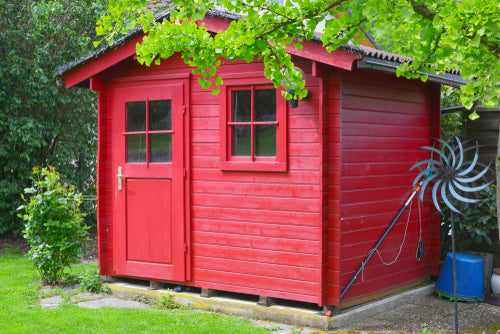
A Beginner’s Guide to Anchoring a Shed to Concrete
Anchoring your shed to concrete may seem daunting. Still, it’s essential for those seeking stability and security, especially in areas prone to high winds or seismic activity.
Using the correct anchoring techniques will help to ensure the stability and longevity of your shed.
Stick with Atlas Sheds to discover how to anchor your shed to concrete for an efficient installation. Browse our garden sheds today to upgrade your garden in time for the warmer weather.
The Materials and Tools Required
- Hammer drill and bits
- Impact driver and sockets
- Measuring tape and level
- Chalk line or marker
- Wrench or socket set
- Galvanised anchor bolts
- Concrete anchors
- Sill plates
- Washers and nuts
- Polyurethane caulk or sealant
- Steel reinforcing mesh (optional)
PPE: Ensure that you wear safety goggles, boots, and gloves when working with materials and sharp tools.
How to Prepare
If you’re installing a new shed, determine the best accessible location for your shed. Consider the size and layout of your shed when placing it.
Once you have chosen an area, clean any debris, obstacles, and dirt out of the way. You need a clean base for the concrete. Then, use a chalk line to mark out the area where your concrete will be placed.
Remove the topsoil within this marked area until you reach a stable subsoil layer. Use a spirit level to ensure the ground is even. The depth of excavation will depend on the frost line in your area, the shed load, and the thickness of the concrete slab.
Then, build a wooden form around the area to contain the concrete. Place a layer of gravel or crushed stone in the excavated area to promote drainage. You can lay steel reinforcing mesh to increase the durability of your shed.
A Step-by-Step Guide to Anchoring Your Shed to Concrete
1. Prepare your concrete surface
Prepare your concrete mix according to the manufacturer's instructions.
Then, pour the concrete mix onto the area contained by the wooden form. Whilst the concrete is still wet, insert the galvanised bolts around the perimeter of the slab. These should be around 12 inches from the corners and 6 feet apart.
Wait for the concrete to cure before continuing.
2. Drill the anchor holes
Place sill plates over the anchor bolts and mark where the bolts touch the wood.
Use a tape measure to determine where the anchor holes need to be drilled. The depth of the hole should be deeper than the depth of the anchor.
Attach your masonry bit to your hammer drill, setting it to hammer mode. Then, slowly drill holes into the marked points. Once the holes have been drilled, use a vacuum with a nozzle to remove any debris from the hole.
3. Install the anchor
There are three common types of concrete anchors to choose from. This includes:
- Expansion anchors: These expand as a bolt is tightened into them, pressing against the concrete to ensure a secure fit. To install these, place them into the drilled hole and lightly tap it into place with a hammer. Insert the bolt or screw and tighten it, using a wrench for extra security.
- Epoxy anchors: This involves placing a bolt into a hole filled with epoxy resin, which hardens to secure the bolt in place. Fill the hole with two-thirds of the epoxy and twist the bolt into place. Once installed, remove any excess resin.
- Screw anchors: These are screwed directly into the pre-drilled holes in the concrete. Use a screwdriver or drill bit to screw the anchor into the hole. It must sit flush with the concrete surface.
4. Attach the shed to the anchor
Position the shed over the concrete slab so that the pre-installed anchors align with the holes drilled in the shed’s base frame or sill plates.
For bolts and expansion anchors, place a washer over each bolt on the base frame or sill plate. Then, thread a nut onto each bolt and tighten it with a wrench. This will protect the shed's wooden base.
For screw anchors, position the shed base over the anchors and use a screwdriver or drill to tighten the screws through the frame and into the concrete.
You can add bracing to the corners of the shed for additional support.
5. Test the stability of the shed
Once the shed is attached to the anchors, inspect all the bolts, nuts, and screws to make sure they’re secure in place.
Gently push against the side of the shed to see if it moves. If it shows instability, tighten any loose anchors.
Invest in Durable Garden Sheds with Atlas Sheds
Atlas Sheds provides a shed for every garden, personal need, and preference.
Whether you want to create your dream sun lounge area with our summerhouses or you’re a gardener looking to upgrade their potting organisation, we have something for every customer.
Designed with durable timber and with great security features, our sheds are built to last. With free delivery and installation, does it get any better than this? Browse our garden sheds today to get started on your garden renovation.